TOP 14 Historical Landmarks in Hanoi to Visit on a Motorbike Tour
The busy capital of Vietnam, Hanoi is rich in history and culture. It’s the ideal location for a once-in-a-lifetime motorbike trip with its old temples, small, meandering lanes, and colonial buildings. In this guide, MOTOGO Tours will take you on a journey through some of the most iconic historical landmarks in Hanoi.
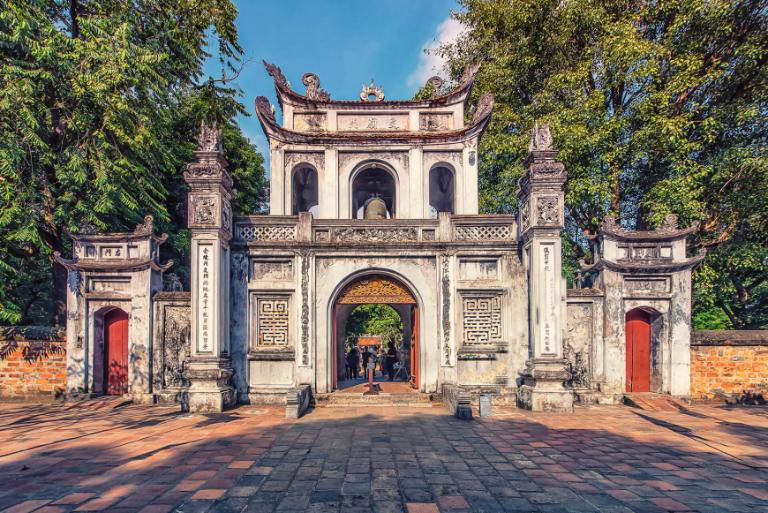
Why Choose a Motorbike Tour to Explore Historical Landmarks in Hanoi?
Riding a motorbike in Hanoi is about really immersing yourself in the rhythm, culture, and history of the city, not only about traveling from one point to another. A motorbike trip provides a special and thrilling approach to visit Ha Noi, enabling you to establish a closer connection with the city than other means of travel might provide.
Freedom and Flexibility
The independence and flexibility Ha Noi by motorbike presents are among its main benefits. A motorbike lets you pick your own itinerary and set your own speed unlike organized trips or public transit. Starting your day with a slow ride around Hoan Kiem Lake, you might veer down secret alleyways or stop on demand at a street food vendor that appeals to you. With other forms of transportation, this degree of unpredictability is challenging.

Access to Hidden Gems
Ha Noi is a city filled with hidden gems that are often buried on little lanes or less-traveled paths. Although buses and cars follow the major paths, a motorbike allows you to stray from the norm. This allows you to find less well-known historical locations, small-town coffee shops, or energetic local markets that might otherwise go missed. Being able to negotiate Ha Noi’s labyrinth-like alleys guarantees that no area of the city is inaccessible.
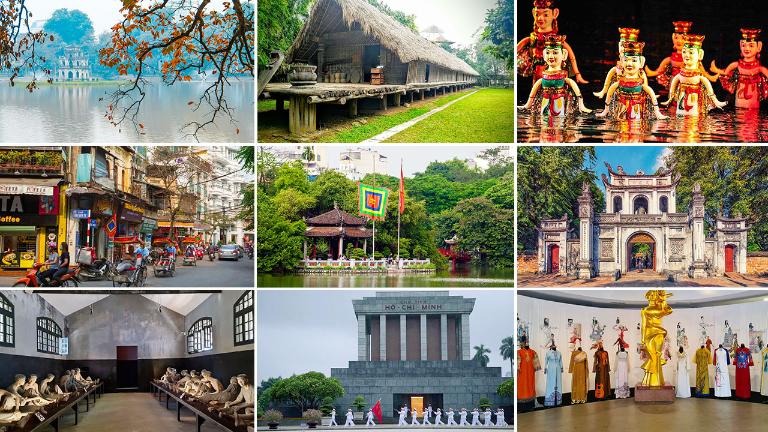
>>> Let’s see more: Discover Lesser-Known Historical Sites In Hanoi: A Journey Through Time
Immersive Experience
Riding a motorbike in Hanoi is a fully sensory experience. You will feel the surge of wind on your face, smell the scent of street food floating through the air, and hear the busy sounds of daily life as you negotiate the streets. This sensory involvement helps you to interact with the city in an interesting and intimate way. A motorbike puts you exactly in the middle of the action whether you’re riding beside the calm waters of West Lake or past the historic walls of the Old Quarter.
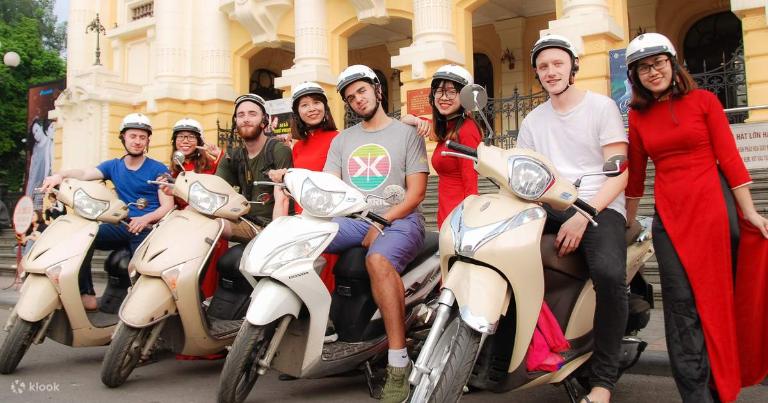
Efficient Way to Cover More Ground
Ha Noi is a city with a rich tapestry of ancient sites dispersed over many areas. Comparatively to walking or depending on public transportation, a motorbike lets you cover more ground in less time. This is particularly helpful if you wish to see several places but have little time in the city. All within one day, you may readily move from viewing the Ho Chi Minh Mausoleum to exploring the Temple of Literature.
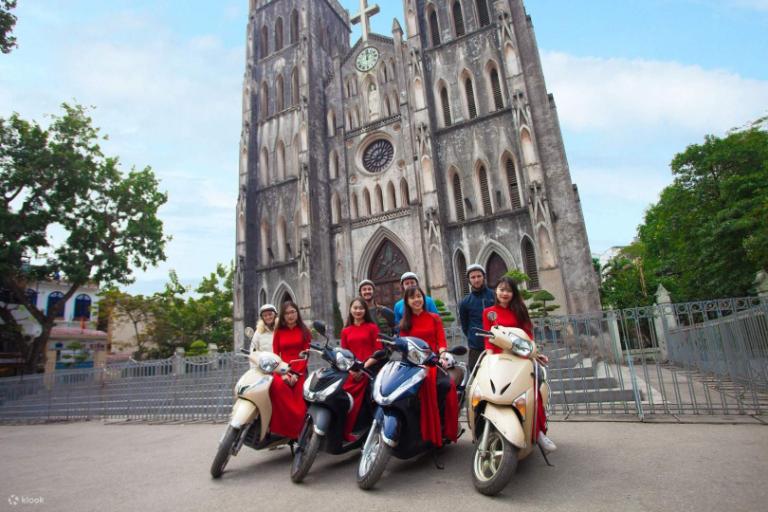
Connection with the Local Culture
Deeply embedded in Vietnamese society is motorbiking. Motorbikes are the main means of mobility seen in Ha Noi among individuals of all ages and backgrounds. Choosing to investigate the city this way helps you to embrace a fundamental feature of local life. A motorbike trip lets you interact with the local population in a more meaningful way whether that means stopping at a roadside café for a quick cup of Vietnamese coffee or talking with other riders at a traffic light.
Must-Visit Historical Landmarks in Hanoi
Ha Noi’s historical sites offer a remarkable window into the city’s past when seen from a motorbike. Every monument, from colonial-era structures to historic temples, tells a different aspect of Vietnam’s past. Here’s a detailed look at the must-visit historical landmarks in Hanoi you can explore.
Thang Long Imperial Citadel
Ha Noi’s most important historical site, the Thang Long Imperial Citadel is a UNESCO World Heritage site. Constructed during the Ly Dynasty in the eleventh century, the citadel was the political hub of Vietnam for more than 13 centuries. Offering a window into the imperial past of the nation, the site has well-preserved buildings, archeological digs, and historical ruins. The architecture of the citadel shows a fusion of Vietnamese, Chinese, and French inspirations, and its past is closely entwined with the rise and fall of several dynasties. Discovering the Thang Long Imperial Citadel helps one to grasp the royal past of Vietnam and its significance in Southeast Asia.
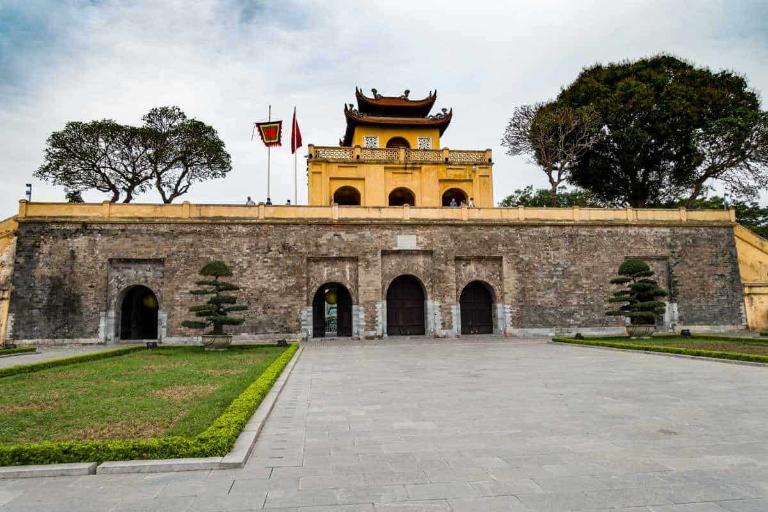
Flag Tower of Ha Noi
One of the most recognizable landmarks of Ha Noi is the Flag Tower, which stands on grounds of the Vietnam Military History Museum. Constructed during the Nguyen Dynasty in 1812, it is 33.4 meters tall and provides panoramic views of the surrounds. Serving as an observation point and a symbol of Vietnamese resiliency, the tower was especially important during several wars. Still a proud emblem of the city today, it is usually seen with the Vietnamese flag flying against the heavens. A great stop on your motorcycling trip, visiting the Flag Tower offers a historical and visual experience.
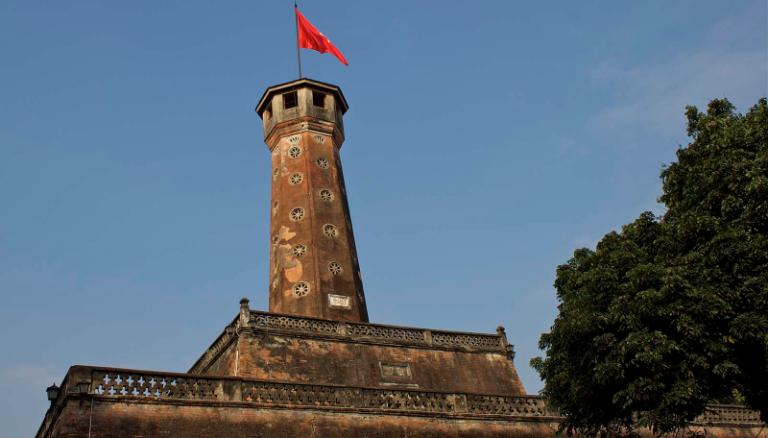
Temple of Literature
One emblem of Vietnam’s rich cultural legacy is the Temple of Literature. Established in 1070 by Emperor Ly Thanh Tong, it was first university in Vietnam, mostly for teaching the elites of the nation in literature and moral philosophy. It was devoted to Confucius. With verdant courtyards, calm ponds, and old stone tablets bearing the names of successful academics, the temple complex offers a quiet haven from the busy metropolis. Any trip of Ha Noi should include this as it is the junction of spirituality, knowledge, and history that makes it vital.
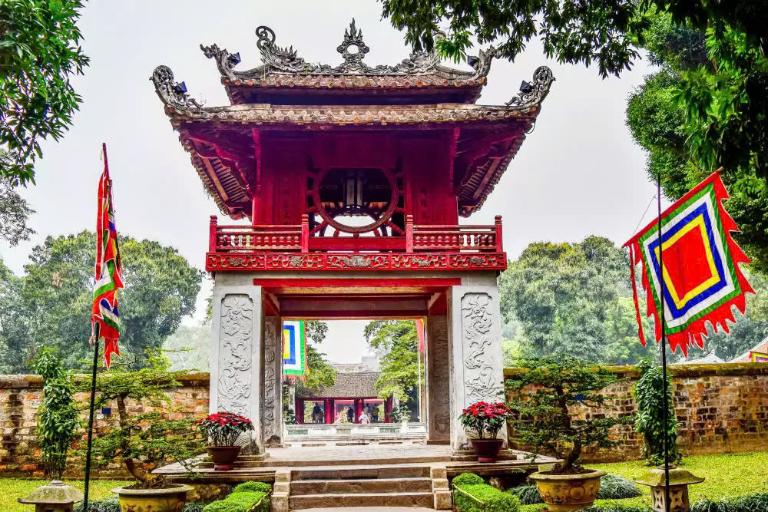
One Pillar Pagoda
Built by Emperor Ly Thai Tong in 1049, the One Pillar Pagoda is among the most unusual buildings in Ha Noi. According to legend, the Emperor dreamed of a bodhisattva presenting him an infant son while perched on a lotus flower, inspiring the lotus-like shape of the pagoda. Perched on a solitary stone pillar in the middle of a lotus pond, the pagoda is not only a wonder of architecture but also a monument of purity and lifespan. The pagoda is a must-see site despite its modest scale since of its historical importance and serene atmosphere.
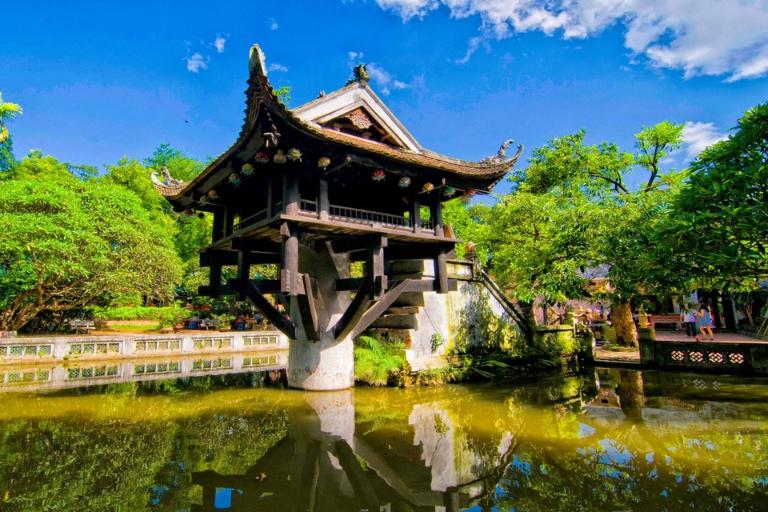
Hoa Lo Prison
Often referred to as the “Hanoi Hilton,” Hoa Lo Prison was first built by the French late 19th century to hold political detainees from Vietnam. Later, the jail became well-known worldwide during the Vietnam War when it housed American POWs including Senator John McCain. The location has been turned into a museum today to provide a sobering view of the terrible treatment prisoners go through. Original cells, guillotines, and relics honoring sacrifice and resiliency abound throughout exhibits. Seeing Hoa Lo Prison offers profound understanding of Vietnam’s fight for independence as well as the experiences of war veterans.
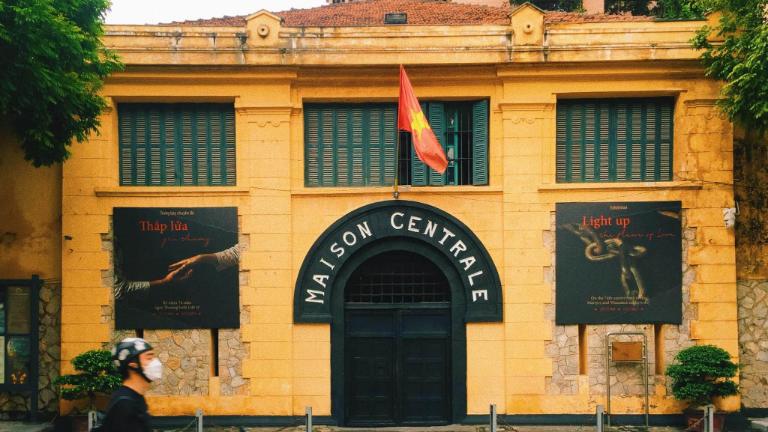
Ho Chi Minh Mausoleum
Housed in the embalmed body of Ho Chi Minh, the revolutionary leader and President guiding Vietnam toward independence, the Ho Chi Minh Mausoleum is among the most renowned sites in country. For many Vietnamese people, the mausoleum, which stands in Ba Dinh Square where Ho Chi Minh announced Vietnam’s independence in 1945, is of pilgrimage. Built from materials gathered from all throughout Vietnam to represent national unity, the imposing edifice itself is Inside, the tone is serious as guests honor one another. The nearby gardens, which include species from all throughout Vietnam, accentuate the importance of this monument as a national pride emblem.
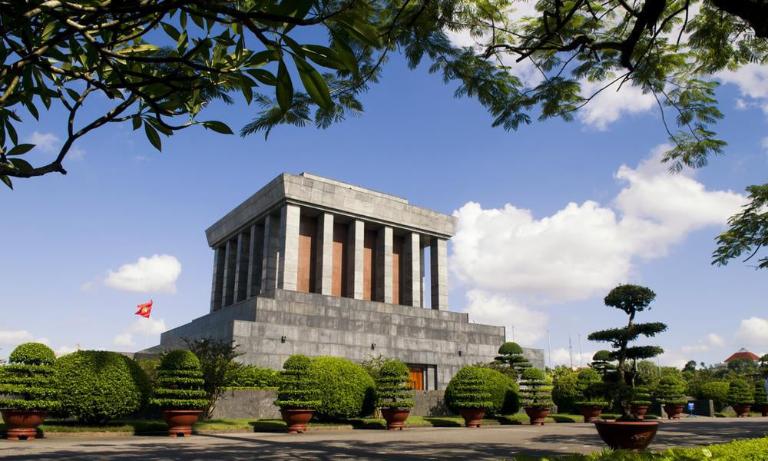
Vietnam National Museum of History
Near Hoan Kiem Lake, the Vietnam National Museum of History is a veritable treasure store of relics spanning thousands of years of Vietnamese history. Comprising displays ranging from ancient implements to relics from the Dinh, Le, Ly, and Tran dynasties as well as objects from the Vietnam War, the museum is set in a stunning colonial-era edifice. The collection of the museum provides a whole picture of the great cultural and historical development of the nation. This museum is a must-see for anyone who enjoy history to help them to better comprehend Vietnam’s past.

>>> Explore: Vietnamese Military History Museum: A Testament to National Pride
Hanoi Opera House
One evidence of the French impact in Vietnam is the Hanoi Opera House. Designed between 1901 and 1911, it is a masterwork of European architecture right in Ha Noi, inspired by the Palais Garnier in Paris. The building’s grandeur is clear from its elaborate façade, great staircases, and magnificent interior—complete with crimson velvet chairs and crystal chandeliers. The Opera House has stage many significant political and cultural events throughout years. It is still a major cultural site today where guests may see events ranging from traditional Vietnamese opera to classical music.

St. Joseph’s Cathedral
One remarkable example of Neo-Gothic architecture is St. Joseph’s Cathedral, sometimes known as Nhà Thờ, Finished in 1886, this Roman Catholic church in Ha Noi reminds one of Notre Dame in Paris. The austere interior of the cathedral, with its tall spires and complex stained-glass windows, contrasts with the vibrant streets outside to create a quiet mood. Apart from a place of worship, it is a cultural site reflecting the fusion of Vietnamese and French colonial traditions.

Dong Xuan Market
Since its opening in 1889, Dong Xuan Market—the biggest indoor market in Ha Noi—has been a vital hub of trade. This large market, which is in the Old Quarter, provides a vivid and disorderly shopping experience where you may buy everything from fresh vegetables and seafood to clothes and electronics. The market is also a great spot to taste regional cuisine since it is well-known for its great array of street food. Dong Xuan Market is still a great element of daily life in Ha Noi and keeps its ancient beauty despite modernism.
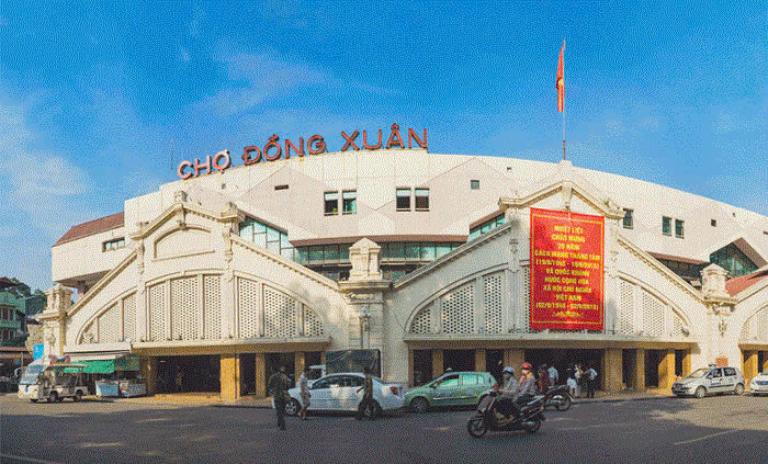
>>> Discover the 10 Must-Visit Markets in Hanoi for Every Traveler
Long Bien Bridge
Designed by eminent French architect Gustave Eiffel, Long Bien Bridge is a living historical monument rather than merely a bridge. Finished in 1902, it connected Hanoi to the northern areas by means of the first steel bridge across the Red River. Bombed extensively during the Vietnam War, the bridge was vital during the French colonial era. Long Bien Bridge is a potent emblem of resiliency even with its war scars; it is also functioning. Riding a motorbike across this old bridge connects you to the past with breathtaking views of the Red River and the busy life on the riverbanks.
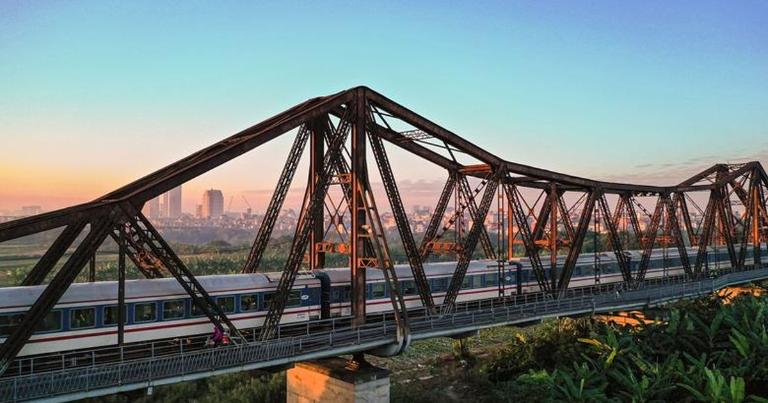
Bach Ma Temple
Having originated in the 9th century, Bach Ma Temple, sometimes known as the White Horse Temple, is among the oldest temples in Hanoi. Originally constructed by Emperor Ly Thai To to commemorate the White Horse deity, which, history has it, pointed the Emperor to the place where the city’s fortifications should be erected, it is situated in the Old Quarter. Though small, the temple has great spiritual and historical value. Among the hectic streets of Ha Noi, this hidden gem is its historic architecture, delicate carvings, and peaceful ambiance. Visiting Bach Ma Temple provides a peaceful haven as well as a thorough exploration of the spiritual legacy of the city.
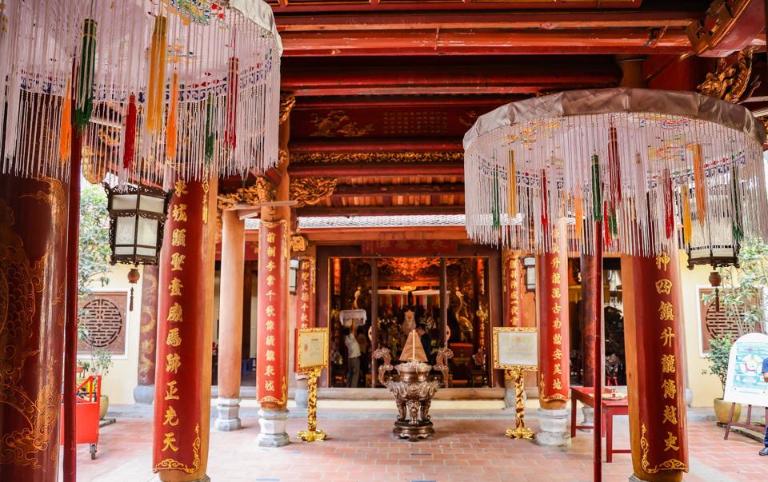
Tran Quoc Pagoda
Dating back to the sixth century, Tran Quoc Pagoda is the first Buddhist temple in Ha Noi situated on a little island in West Lake. Originally situated on Red River banks, it was relocated to its present site during the 17th century. With its tall, lean construction and elaborate carvings, the pagoda is an architectural masterpiece. Offering a peaceful haven from the city, this area of devotion and meditation Combining the pagoda’s spiritual and historical importance with its calm surroundings, it becomes the highlight of any trip of Ha Noi’s ancient sites.
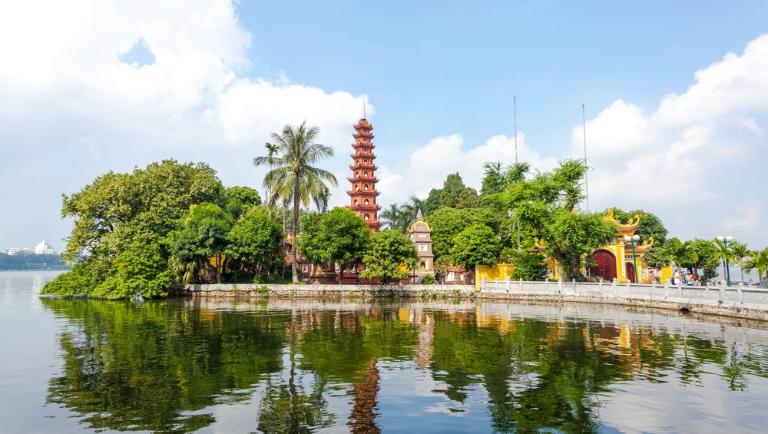
Ngoc Son Temple
One of Ha Noi’s most often visited sites is Ngoc Son Temple, which is on a little island in Hoan Kiem Lake. Built in the 18th century, the temple honors the Confucian master Nguyen Van Sieu and the scholar Van Xuong as well as General Tran Hung Dao, who vanquished the Mongolians in the 13th century. One may reach the temple from the famous red Huc Bridge, a good location for pictures. Anyone visiting Ha Noi should definitely visit the temple since of its calm surroundings, historical relevance, and gorgeous surroundings.
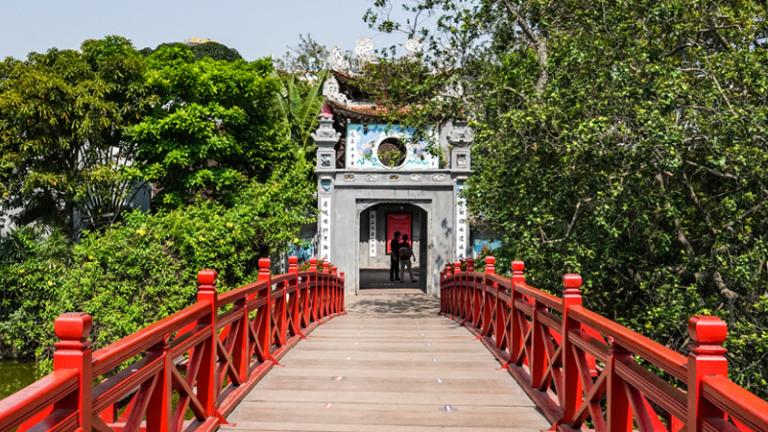
A Hanoi motorbike tour about historical sites provides a remarkable experience. Discovering the hidden treasures of the city and really immersing yourself in its rich past will help you to appreciate Vietnam’s cultural legacy. So be ready and start an adventure that will leave lifetime of memories behind.
Related Posts:

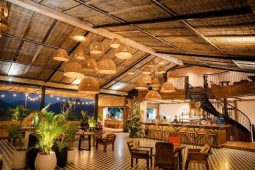


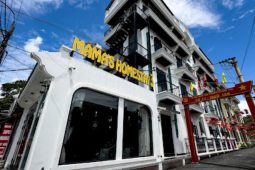


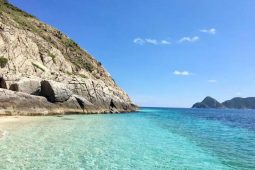

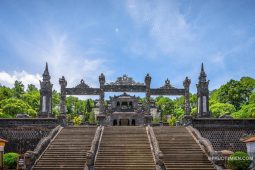
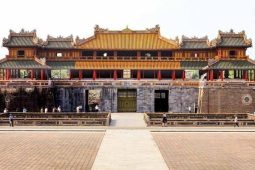

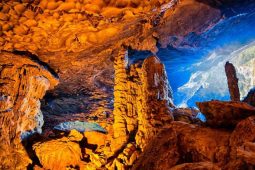
Be the first to comment!